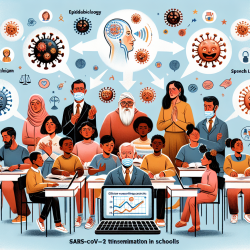As a Special Education Director, I have seen firsthand the challenges and triumphs of working with students who stutter. It's a journey that requires patience, understanding, and, most importantly, evidence-based strategies to support these individuals effectively. The publication "Nature and Treatment of Stuttering: New Directions" provides invaluable insights into the latest research and treatment developments for stuttering, offering a fresh perspective that can empower speech-language pathologists (SLPs) in their clinical practice.
Understanding Stuttering: A Comprehensive Approach
Stuttering is a complex fluency disorder that affects individuals across various ages, impacting their communication skills and, in many cases, their self-esteem and social interactions. The book underlines the importance of adopting a comprehensive approach to understanding stuttering, moving beyond traditional methods to embrace new research findings and therapeutic strategies.
The Role of Genetics and Environment
One of the key takeaways from the book is the significance of genetics and environmental factors in the development of stuttering. This dual perspective challenges SLPs to consider not only the biological predispositions of individuals who stutter but also the influence of their surroundings, including family dynamics, social interactions, and educational settings.
Early Intervention and Prevention
Another critical aspect highlighted is the importance of early intervention and prevention strategies. By identifying stuttering at its onset and implementing targeted interventions, SLPs can significantly reduce the long-term impact of stuttering on an individual's communication skills and overall quality of life.
Innovative Treatment Approaches
The book presents a variety of innovative treatment approaches, encouraging SLPs to explore new methods and techniques that can be tailored to the unique needs of each person who stutters. These include:
- Demands and Capacities Model: This approach focuses on balancing the demands placed on an individual's speech and language capacities, aiming to reduce stuttering by managing external pressures and enhancing internal capabilities.
- Integrated Treatment Models: Combining fluency shaping and stuttering modification techniques, integrated models offer a holistic approach to treatment, addressing both the physical aspects of stuttering and the emotional and psychological factors involved.
- Technology-Assisted Interventions: The use of technology, including speech therapy software and mobile applications, has emerged as a promising tool in stuttering treatment, offering new ways to practice speech techniques and monitor progress.
Empowering Clinicians and Clients
Beyond specific treatment methodologies, "Nature and Treatment of Stuttering: New Directions" emphasizes the importance of empowering both clinicians and clients. For SLPs, this means staying informed about the latest research, engaging in continuous professional development, and adopting a client-centered approach that respects the individual's goals and preferences.
For individuals who stutter, empowerment comes from being actively involved in their treatment process, setting realistic goals, and developing self-advocacy skills. This collaborative approach fosters a sense of agency and confidence, crucial elements for successful communication and personal growth.
Encouraging Further Research and Collaboration
The book also serves as a call to action for ongoing research and collaboration among SLPs, educators, and researchers. By working together and sharing insights and experiences, the field can continue to advance, developing more effective strategies for treating stuttering and supporting those affected by it.
As we strive to improve the lives of individuals who stutter, it is essential to embrace new directions in research and treatment. "Nature and Treatment of Stuttering: New Directions" offers a wealth of knowledge and inspiration for SLPs committed to making a difference in their clients' lives.
To read the original research paper, please follow this link: Nature and Treatment of Stuttering: New Directions (1997).










